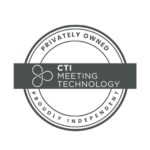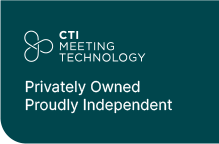Ever walked into a room – maybe a big lecture hall or even a casual community meeting – and just instantly felt like you belonged? Or, on the flip side, totally felt out of place? Those feelings often come from who is in the spotlight, whose voices are being heard loudest, and what viewpoints seem to matter most.
Why Diversity and Inclusion Matter in Scientific Conferences
For many years, the faces on stage, the voices leading discussions, and the perspectives shaping the agenda have often lacked the rich tapestry of backgrounds and experiences. When conference faculties lack diversity, we all miss out on a multitude of benefits:
- Richer perspectives and breakthroughs: Diverse teams are more innovative and lead to better problem-solving. A variety of viewpoints can spark new ideas and challenge existing paradigms, leading to more robust scientific discussions and, ultimately, more impactful research.
- Enhanced relevance and reach: An inclusive faculty naturally attracts a broader audience, making your conference valuable and accessible to a wider range of participants. This fosters a more vibrant and representative scientific community.
- Role models and inspiration: Seeing individuals from various backgrounds represented on stage can inspire the next generation of scientists, particularly those from underrepresented groups in STEM events.
- Greater equity and fairness: Consciously working to include diverse voices addresses historical imbalances and ensures that opportunities are distributed more equitably across the scientific landscape.
- Improved scientific rigor: Avoiding bias in speaker selection and embracing a wider array of expertise can lead to more thorough peer review, more rigorous debate, and ultimately, higher-quality scientific discourse.
The drive for DEI in scientific meetings is not just a passing trend, but a key shift towards building better, more impactful, and more representative scientific events.
What an Inclusive Conference Looks Like
Imagine a scientific conference where the halls are buzzing with diverse languages and accents, where the speaker lineup reflects global expertise, and where every attendee, no matter their background or ability, feels like they truly belong. Sounds incredible, right? This is what an inclusive conference looks like – an environment where:
- The speaker faculty is representative of various genders, ethnicities, career stages, geographical locations, institutions, and research perspectives.
- Session topics are broad and varied, encompassing a wide range of scientific disciplines and approaches.
- Discussion panels feature diverse viewpoints, encouraging lively and multifaceted exchanges.
- Networking opportunities are designed to be accessible and welcoming to all, fostering genuine connections.
- Accessibility considerations are crucial, ensuring that individuals with disabilities or other restrictions can fully participate.
- Childcare options or family-friendly policies are in place to support caregivers who wish to attend.
- Codes of conduct are clearly communicated and enforced, creating a safe and respectful environment for everyone.
- The organizing committee itself is diverse, embodying the very principles of inclusion it aims to promote. This often starts with building diverse advisory boards that guide the overall direction of the event.
Strategies for Building Diverse Speakers and Committees
Building a truly diverse and inclusive conference faculty requires intentional effort and strategic planning from the outset. It will require your team to actively identify and invite excellence from all corners of the scientific world. Here are some key inclusive speaker selection strategies and inclusive faculty recruitment practices:
Set Inclusion Goals Early in Planning
Diversity and inclusion should never be an afterthought. From the very first planning meeting, explicitly define your diversity goals. These aren’t just aspirational statements; they are concrete targets. For example, aim for a specific percentage of speakers from underrepresented groups, a minimum gender balance, or representation from a certain number of countries or institutions.
- Quantify your goals: Instead of just saying “we want more diversity,” state “we aim for at least 50% gender balance on all panels and keynotes, and at least 30% representation from early-career researchers.”
- Clearly communicate your goals: Ensure that all sub-committees – especially the program and speaker selection committees – are aware of and committed to these goals.
- Regularly review progress: Integrate discussions about diversity goals into your regular planning meetings.
Broaden Your Search Networks
Relying solely on your immediate professional network will inevitably perpetuate existing biases. To truly promote diverse scientific voices, you need to actively expand your search. Think big!
- Leverage professional organizations and societies: Many organizations and institutions are dedicated to promoting diversity in STEMM; reach out to them for recommendations.
- Ask for diverse recommendations: When soliciting suggestions from colleagues, explicitly ask them to recommend individuals from underrepresented groups. Frame it as a commitment to planning equitable conferences.
- Research inclusivity guidelines: If your conference is on-site, many venues already provide guidelines to make these spaces more inclusive. Assign part of your team to research how to make your meeting as inclusive and accessible as possible.
- Engage early-career researchers: Actively seek out talented postdocs, junior faculty, and even advanced graduate students. They often bring fresh perspectives and innovative research. Plus, it’s great to give new talents a platform!
- Utilize social media and online platforms: Professional networking sites can be valuable tools for identifying diverse talent, but ensure you’re proactively searching beyond your immediate connections. Consider smaller, niche communities where diverse voices might gather.
Use Blind or Semi-Blind Review for Speaker Proposals
When using an open call for speaker proposals, implementing a blind or semi-blind review process can significantly avoid bias in speaker selection.
- Blind review: Remove all identifying information (names, affiliations, gender) from proposals before they are reviewed by the committee. This forces reviewers to focus solely on the scientific content.
- Semi-blind review: While names might be visible, explicitly instruct reviewers to disregard identifying information and focus purely on the quality of the abstract and its relevance.
- Standardized evaluation criteria: Develop clear, objective criteria for evaluating proposals and ensure all reviewers adhere to them. This helps to minimize subjective judgments that can inadvertently favor specific profiles.
Balance Invitations with Open Calls
While open calls promote broader participation, relying solely on them can sometimes lead to a less diverse outcome if your outreach efforts aren’t robust. A balanced approach is often most effective.
- Strategic invitations: Proactively invite leading experts from underrepresented groups or those whose research aligns with your diversity goals. This ensures their inclusion and signals your commitment to representation in academic conferences.
- Targeted outreach for open calls: When issuing an open call, specifically disseminate it through diverse networks and channels. Don’t just post it on your website and hope for the best. Spread the word strategically!
- Mentorship and encouragement: For promising individuals who may be hesitant to apply (maybe due to imposter syndrome or less experience with large conferences), offer encouragement or connect them with mentors who can support their application process.
Address Barriers to Participation
Even with the best intentions, practical barriers can prevent diverse individuals from participating; proactively addressing these shows a genuine commitment to speaker equity best practices.
- Financial support: Offer travel grants, registration waivers, or stipends, particularly for early-career researchers, students, or those from less well-funded institutions or countries. For example, establishing a dedicated fund for speakers from low-income countries can make a huge difference in who can actually attend and speak.
- Childcare and family support: Provide on-site childcare, reimbursement for childcare costs, or flexible scheduling options.
- Accessibility: Ensure the venue is physically accessible (e.g., ramps, accessible restrooms, clear pathways) and that presentation formats accommodate diverse needs (e.g., live captioning, sign language interpreters for deaf or hard-of-hearing attendees, session streaming for remote attendees who can’t travel).
- Visa assistance: For international speakers, offer comprehensive support with visa applications and related documentation. This can be a complex and time-consuming process, and your help can make it stress-free.
- Mentorship and guidance: For first-time speakers or those less experienced with large conferences, offer resources, practice sessions, or mentorship to build their confidence.
- Flexible presentation formats: Consider options beyond traditional lectures, such as shorter talks, panel discussions, or interactive workshops, which may appeal to a wide range of speakers.
Monitoring and Accountability in Speaker Selections
So you have strategies in place. But implementing them is only half the battle! Sustained progress requires rigorous monitoring and accountability. This truly demonstrates a genuine commitment to diversity in scientific event planning, translating good intentions into tangible results.
Track Representation Metrics
Data is crucial to understanding where you stand and identifying areas for improvement.
- Collect demographic data: Ethically and transparently collect data on the gender, ethnicity, career stage, institutional affiliation, and geographical location of your speakers, session chairs, and committee members. Ensure data collection methods comply with privacy regulations.
- Analyze the data: Regularly review these metrics against your pre-defined diversity goals. Identify any disparities or areas where representation is lacking.
- Benchmark against previous years: Compare your current diversity metrics to past conferences to track progress over time.
- Publicly share aggregate data (where appropriate): Being transparent about your progress (and challenges!) can really build trust and encourage other conference organizers to step up their game. This commitment to building a diverse conference faculty will shine. Lead by example!
Create a Speaker Diversity Policy
A formal, written speaker diversity policy for events solidifies your commitment and provides a framework for decision-making.
- Define clear goals and principles: Articulate your commitment to diversity, equality, and inclusion in all aspects of speaker selection and conference programming.
- Outline specific strategies: Detail the methods you will employ to achieve your diversity goals, such as those discussed above.
- Assign responsibilities: Clearly define who is accountable for implementing and monitoring the policy within the organizing committee.
- Establish review processes: Specify how often the policy will be reviewed and updated to ensure its continued relevance and effectiveness.
- Communicate the policy: Make the policy readily available on your conference website and share it with all relevant committees.
Communicate Inclusion to Your Audience
Transparency about your commitment to DEI is essential. It not only sets expectations but also attracts a more diverse pool of attendees and potential speakers.
- Articulate your DEI policy: Clearly state your commitment to diversity and inclusion on your conference website and in promotional materials. Explain the steps you are taking to ensure an inclusive environment.
- Share your diversity statistics (where appropriate): If you are comfortable, share aggregated data on the diversity of your speakers and attendees to demonstrate your progress. For example, a statement like, “We’re proud to report that our 2024 conference achieved 48% gender balance among speakers” can be super impactful and inspiring!
- Highlight inclusive programming: Draw attention to sessions, workshops, or keynotes that specifically address diversity-related topics or feature underrepresented perspectives. This is part of inclusion in conference programming.
- Promote your code of conduct: Clearly communicate your code of conduct to ensure a welcoming and respectful environment for all participants. Let everyone know that your conference is a safe space for respectful engagement.
Wrapping Up…
Building a diverse and inclusive conference faculty isn’t merely about checking boxes or adhering to quotas; it’s about enriching the scientific discourse, fostering innovation, and creating a more equitable and representative scientific community.
Prioritizing DEI provides varied perspectives, rich experiences, and fresh insights, all of which contribute to an overall more enjoyable and impactful meeting experience for your participants.
Ready to make your next scientific conference a true reflection of the diverse and dynamic world of science? Use this guide to start planning more inclusive scientific conferences, or book a call with us to learn how our solutions can support your goals.





